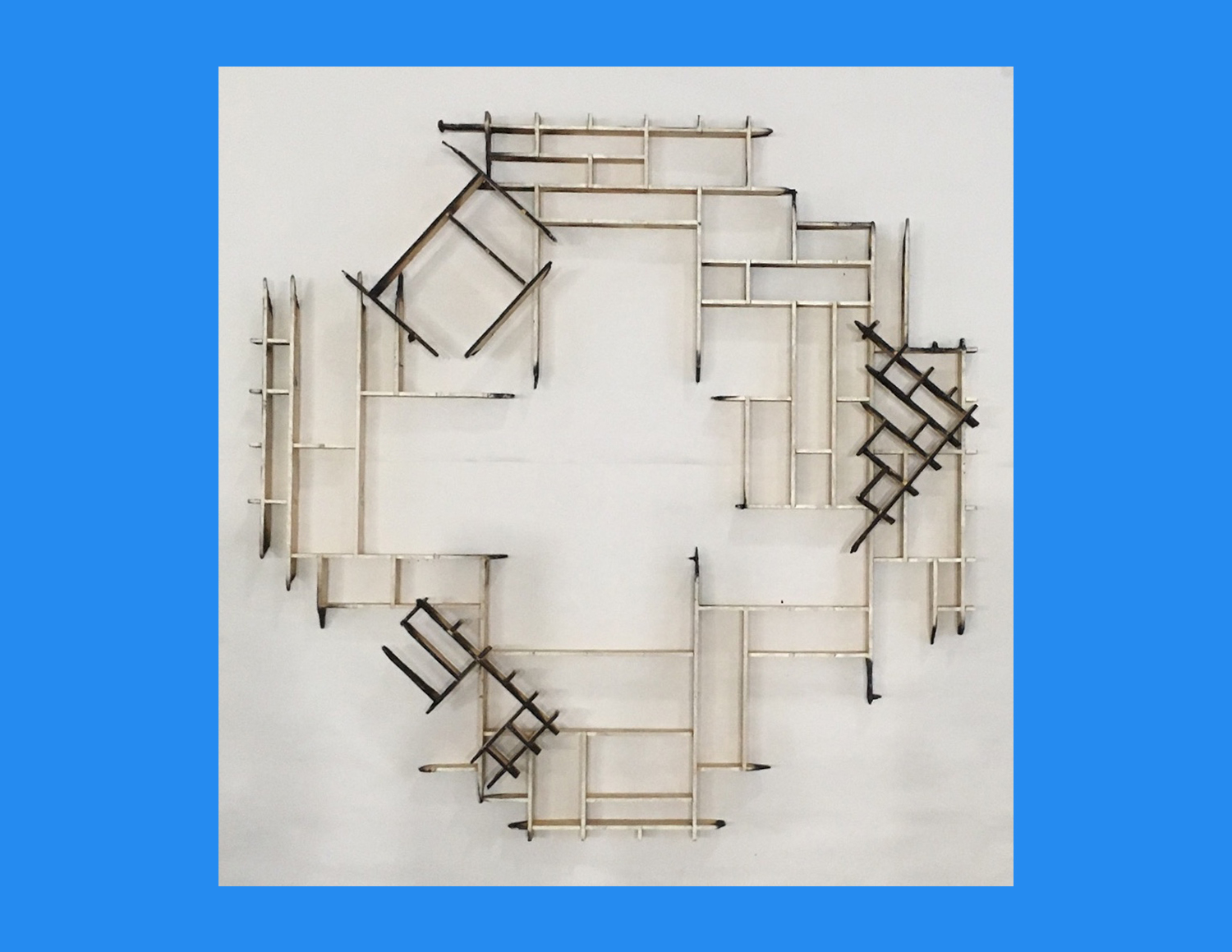Amelia Currier is a Detroit area artist, originating in the Cass Corridor Movement. Currier studied painting under the tutelage of George Vihos at The Roeper School, and then studied intaglio printmaking with Stanley Rosenthal, earning a BFA at Wayne State University. Her prints and drawings are in the collection of Fidelity Investments, The Duffy Collection, The Ontological Museum and private collections.
How did you come to work with your specific collaborator? Did you know them before this? Were you familiar with their work?
Kathryn Brackett Luchs and Robert Sestok thought that John Egner and I would make a good match as we had some overlapping aesthetic sensibilities. Minimal imagery with an organic rhythmic flow, but a formal backbone, are some of the commonalities. Kathryn also felt that being temperamentally compatible would nurture more creative flow. John and I have known each other since the Cass Corridor days. I have followed his work for decades and admired his willingness to take chances, when he could have leaned on past successes.
Before the actual process of making, what was the process of deciding on what to make like? What was the making process itself like?
I asked John to surprise me- I sensed whatever came my way, we could create something original. Below is the wooden grid he sent, before I transformed it. 24×24”

The process of merging our two visions was gracefully solved by using the grid, being light and open, as a means to cast shadows. The cast shadows would reflect on the papers I hung behind it. Part of my daily practice is to make a few Ensō ink gestures, I chose two from my collection that were on translucent Washi paper. To integrate the circles with the grid, I burned the corners off it, and placed the corner pieces on the top, in their own circle, which echoed the ink gestures.

What new possibilities were offered through collaboration that would not have been possible working alone? Did you feel any disadvantages compared to working alone?
Collaboration forces one to lose the freedom of creative movement that is core to being an artist. But, along with that internal shift new territories are explored that otherwise would not have presented themselves. With our piece, John’s grid, -which is foreign to my imagery- had to evolve into a form compatible with my organic origins, while respecting its quiet, geometric rhythms.
I think the challenge of collaboration is the need to constantly reign in and realign your normal creative drives and impulses, and to be certain you are respecting your partner’s voice.
Did working collaboratively provide you with any insights that could be extrapolated and used outside of art in either a personal or political context? Were there lessons learned that could be used in other aspects of life? What did it teach you about democracy?
The lesson I took away from this experience was one of the serendipitous and illuminating potential of having limitations imposed. Because I was presented with a geometric form that was not in my artistic vocabulary, I had to cast about until I found a way to merge it with my own voice. The result was like nothing I or we have ever created before, and an image I hope to explore further. This lesson dovetails easily into a life lesson; that we are all more resilient and resourceful than we realize.
Regarding democracy- I am not a political animal, although the last few years have forced me to pay more attention to the shift our country was experiencing. This collaboration was certainly an example of putting one’s self in another’s shoes.
